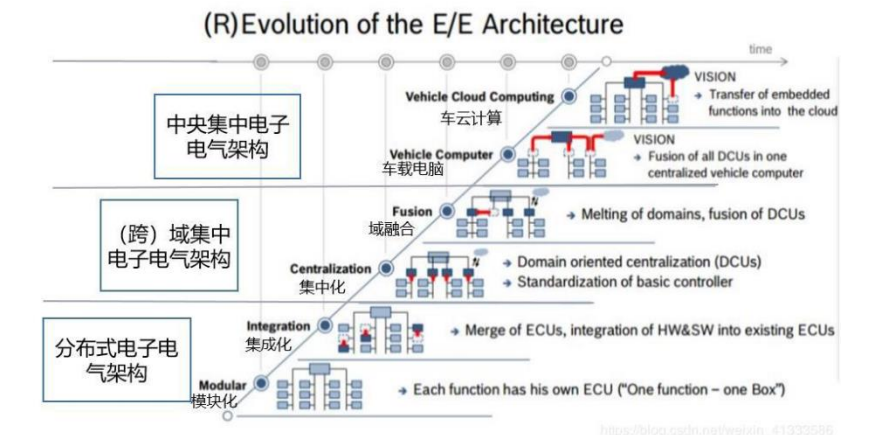Source: Core Bugs Author: Aileen
Bosch Group, headquartered in Stuttgart, Germany, is a world leading technology and service provider, whose business covers automotive and intelligent transportation technology, industrial technology, consumer goods, and energy and building technology. It covers all automotive solutions and products, including chassis system, steering, electronic drive of the body, and entertainment activities of the body. As a leading IoT supplier, Bosch provides innovative solutions for smart home, industry 4.0 and connected mobile. In 2020, Bosch’s sales in China will exceed Germany for the first time.
Bosch, an industrial giant, achieved a sales performance of about 78.8 billion euros (about 572.8 billion yuan) in 2021, up 10.1% year on year. Its profit before interest and tax reached 3.2 billion euros, up more than 50% year on year. The operating profit margin before interest and tax was 4%, with a year-on-year increase of 1.2 pct (the operating profit margin before interest and tax in the previous year was 2.8%). Bosch Group has about 402600 employees worldwide, with about 6700 additional employees mainly located in Asia Pacific and Europe; The number of German employees is stable at about 131400. The number of employees in the R&D field increased by nearly 4% to 76000. The number of software developers in the world exceeded 38000, an increase of about 4000 over the previous year. There are 440 branches and regional companies in the world.
According to the ranking of the world’s top 100 auto parts suppliers in 2021 released by Autmotive News, the top ten auto parts suppliers are Bosch, Dianzhuang, ZF, Magna International, Aixin Jingji, Hyundai Mobius, Freya, Continental, BASF and Lear. In 2021, Bosch ranked first among the top 100 auto parts suppliers in the world.
Intelligence leads to centralized electronic and electrical architecture.
Automobile electric intelligence requires profound technology accumulation, large R&D investment and cross-border collaboration. Bosch and other leading traditional parts suppliers have taken the lead. The automotive electrical architecture revolution is expected to break through the bottleneck and support complex functional requirements. It is a feasible method to break through the performance bottleneck of distributed architecture ECU, realize more functions and even upgrade software by moving from distributed to domain controller and then to central centralized automotive electrical structure. Tier1 manufacturers, represented by Bosch, Continental, Ambofu, etc., all take the centralized electrical architecture (EEA) as the technological development path.
Bosch divides the development of automotive E/E architecture into six stages: the first stage is the modular stage, where each ECU is responsible for specific functions, and the architecture is complex and redundant; In the second stage, integration stage, a single ECU can be responsible for multiple functions; The third stage, the domain centralization stage, concentrates the integrated multiple functions into a domain control unit or domain calculator; The fourth stage, domain fusion stage, where multiple domains are merged together and controlled by cross domain control units or cross domain computers; The fifth stage is the on-board computer stage, which is controlled by the central vehicle control computer; The sixth stage is the car cloud computing stage, where some functions are transferred to the cloud.
In the era of intelligent electric vehicles, the E/E architecture has been upgraded, and the core competitiveness of electronic components led by semiconductors in the automotive field has been greatly improved. The market space is expected to be further opened, with the core device power semiconductors that achieve energy conversion and transmission in the five domains as the main increment. It is estimated that the global automotive power semiconductor market will reach 12.5 billion dollars by 2025. But at present, the market is mainly monopolized by Infineon and other European and American manufacturers. The localization rate of power devices in China is about 10%, and it is concentrated in low-end products such as diodes and thyristors. The demand for localization is strong.
Leading motor and electronic control technologies, focusing on battery technology
In 2021, Bosch’s orders related to electrified travel will exceed 10 billion euros for the first time. Bosch will invest about 3 billion euros in the next three years to develop technologies such as electrification and hydrogen energy, and enter the market of electrolyzer stack, the core component of hydrogen electrolysis system, with a scale of 14 billion euros. It will be combined with power electronic equipment, sensors and control units to create an intelligent module. The hydrogen production battery stack is expected to be put into production as early as 2025.
Bosch will continue to fully promote the layout to achieve digital transformation: by 2025, it will invest 10 billion euros in the digital and intelligent interconnection fields. Two thirds of the investment will be used to research and develop new technologies with development prospects, focusing on sustainable development, travel and industry 4.0.
Electrified transportation will become a core business of Bosch in the foreseeable future, mainly in the direction of electric travel driven by batteries and fuel cells. From electric bicycles to trucks, Bosch will continue to increase its diversification in electrified transportation products..
Post time: Nov-22-2022

